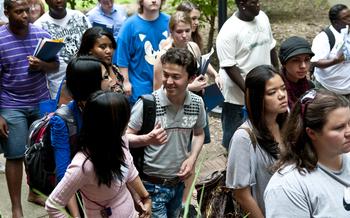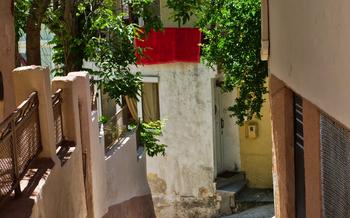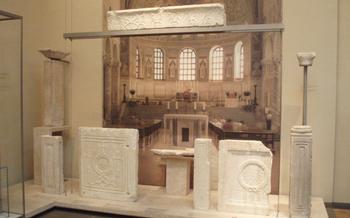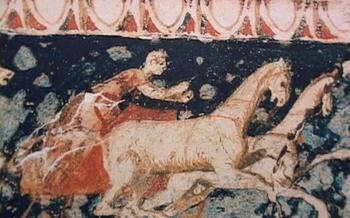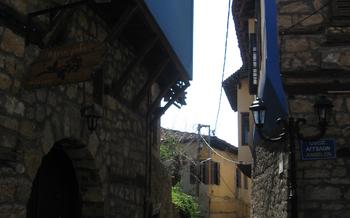
The Byzantine Walls of Veria
- The Byzantine Walls of Veria: A Timeless Legacy
- A Stroll Through History: Exploring the Walls
- Gateways to the Past: The City Gates
- Fortifications and Towers: A Defensive Masterpiece
- Byzantine Architectural Elements: A Blend of Styles
- The Anaplous Gate: A Gateway to the Past
- The Rotunda of Saint George: A Hidden Gem
- The Jewish Quarter: A Walk Through History
- The Archaeological Museum of Veria: Unveiling the Past
- The Church of the Panagia Gorgoepikoos: A Sacred Haven
- The Veria Town Hall: A Symbol of Civic Pride
- The Tower of the Bey: A Majestic Reminder
- The Park of the Byzantine Walls: A Place for Leisure
- Local Cuisine and Flavors: A Culinary Journey
- Insider Tip: Hidden Gems Off the Beaten Path
The Byzantine Walls of Veria: A Timeless Legacy
Nestled in the heart of Macedonia, Greece, the city of Veria boasts a remarkable historical treasure: the Byzantine Walls. These imposing fortifications, constructed during the Byzantine Empire's reign, stand as a testament to the city's rich past and enduring legacy. Their strategic location, architectural grandeur, and exceptional state of preservation make them a captivating attraction for history enthusiasts, architecture buffs, and travelers seeking a glimpse into the depths of time.
As you approach Veria, the Byzantine Walls emerge on the horizon, their formidable presence evoking a sense of awe and wonder. Their towering height and massive scale speak to the engineering prowess of the Byzantine builders, who skillfully crafted these ramparts to protect the city from invading forces. The walls, which once encircled Veria in their entirety, now form a picturesque backdrop to the modern cityscape, seamlessly blending the ancient with the contemporary.
The architectural features of the Byzantine Walls are a testament to their enduring strength and resilience. Constructed primarily of stone and brick, the walls incorporate a variety of defensive elements, including towers, gates, and fortifications. The towers, strategically placed along the perimeter, provided vantage points for archers and guards to survey the surrounding landscape and repel enemy attacks. The gates, once the city's main entry points, showcased intricate carvings and inscriptions, hinting at the grandeur and importance of Veria during the Byzantine era.
Despite the passage of time and the ravages of history, the Byzantine Walls of Veria remain remarkably well-preserved. Their sturdy construction and meticulous maintenance have allowed them to withstand the test of time, retaining their original form and grandeur. Today, these walls stand as a tangible link to Veria's Byzantine heritage, inviting visitors to step back in time and experience the grandeur of this once-powerful empire.
As a cultural heritage site of immense significance, the Byzantine Walls of Veria are a source of pride and inspiration for the local community. The walls' enduring presence serves as a reminder of the city's rich history and its resilience in the face of adversity. Veria takes great pride in preserving and promoting this exceptional monument, ensuring that future generations can continue to marvel at its beauty and historical significance.
A Stroll Through History: Exploring the Walls
Location and accessibility: The Byzantine Walls of Veria form a circuit around the old city center, which is easily accessible on foot or by public transportation. The main entrance to the walls is located near the Archaeological Museum, from where visitors can begin their exploration.
Suggested walking route: A suggested walking route starts from the Archaeological Museum and follows the walls in a clockwise direction. This route takes visitors past key landmarks such as the Anaplous Gate, the Rotunda of Saint George, the Jewish Quarter, and the Church of the Panagia Gorgoepikoos.
Key landmarks and viewpoints: Along the way, visitors will encounter several key landmarks and viewpoints that offer stunning panoramic views of the city and the surrounding mountains. These viewpoints include the Tower of the Bey, the Park of the Byzantine Walls, and the Veria Town Hall.
Historical anecdotes and stories: During the walk, visitors can learn about the rich history of the Byzantine Walls through historical anecdotes and stories. For example, they can discover how the walls were breached by the Ottomans in the 15th century, and how they were later restored by the Venetians.
Gateways to the Past: The City Gates
The Byzantine Walls of Veria were once pierced by several imposing gates, each serving a specific purpose in the defense and development of the city. The most prominent among them is the Anaplous Gate, located on the eastern side of the walls. Constructed in the 13th century, this gate features a double-arched entrance and an inscription that translates to "Gate of Hope." It served as the main entrance to the city from the direction of Thessaloniki and was heavily fortified to withstand attacks.
Another significant gate is the Porta Nea, or New Gate, located on the western side of the walls. Built in the 14th century, this gate exhibits a more elaborate design with a triple-arched entrance and a machicolation, a defensive feature that allowed defenders to drop rocks or boiling liquids on attackers. The Porta Nea provided access to the city from the direction of Epirus and was crucial for trade and communication with the western regions.
The Porta Romana (Roman Gate), on the southern side of the walls, was constructed in the 6th century and served as the main entrance to the city from the direction of the Roman Empire. It features a single-arched entrance and was reinforced with towers and fortifications over the centuries.
These gates not only provided access to the city but also played a crucial role in its defense. They were equipped with iron doors, portcullises, and drawbridges, making it difficult for invaders to penetrate the city walls. The gates were also used to control the movement of people and goods, ensuring the safety and prosperity of Veria.
Fortifications and Towers: A Defensive Masterpiece
The Byzantine Walls of Veria showcase a remarkable array of fortifications and towers that served as a formidable defense system. Along the walls, visitors can observe different types of fortifications, each playing a crucial role in protecting the city. These include bastions, which project outward from the wall, providing additional protection and allowing defenders to fire upon attackers from multiple angles. Curtain walls, continuous stretches of wall connecting towers, formed the main defensive line and served as a barrier against enemy forces.
The construction materials used in the fortifications are a testament to the engineering prowess of the Byzantines. Thick stone walls, often reinforced with brick, provided exceptional strength and durability. The use of mortar and lime ensured a cohesive structure, while the incorporation of ceramic tiles and stones added decorative elements to the otherwise austere walls.
The towers, strategically positioned along the walls, played a crucial role in the city's defense. These massive structures, often rising several stories high, provided elevated vantage points for spotting approaching enemies, signaling to other towers, and launching counterattacks. The towers were equipped with arrow slits and loopholes, allowing defenders to fire upon attackers while minimizing their own exposure.
The fortifications and towers of the Byzantine Walls stand as a testament to the ingenuity and military prowess of the Byzantines. This intricate system of defenses effectively protected Veria from invaders, ensuring its survival and prosperity throughout centuries of turbulent history.
Byzantine Architectural Elements: A Blend of Styles
The Byzantine Walls of Veria showcase a fascinating blend of architectural elements, reflecting the city's rich cultural heritage and the fusion of Byzantine and Hellenistic influences. The walls incorporate arches, a defining feature of Byzantine architecture, which provide structural support and create a sense of grandeur. Columns, another hallmark of Hellenistic architecture, are also utilized, adding an air of classical elegance to the fortifications.
Mosaics, with their vibrant colors and intricate designs, adorn various sections of the walls. These mosaics depict religious scenes, historical events, and decorative motifs, offering a glimpse into the artistic traditions of the Byzantine era. Decorative elements, such as carvings and sculptures, further enhance the aesthetic appeal of the walls, showcasing the craftsmanship and artistry of Byzantine builders.
Over time, the architectural styles employed in the construction of the walls evolved, reflecting changing artistic trends and influences. The earlier sections of the walls exhibit a more pronounced Hellenistic influence, with their emphasis on symmetry and classical motifs. As the Byzantine Empire gained prominence, the architectural style shifted towards a more distinctly Byzantine aesthetic, characterized by the extensive use of arches, mosaics, and decorative elements.
This blend of architectural styles creates a unique and visually captivating experience for visitors, allowing them to trace the evolution of architectural trends and witness the fusion of different cultures that shaped the Byzantine Walls of Veria.
The Anaplous Gate: A Gateway to the Past
Among the most significant gateways along the Byzantine Walls of Veria is the Anaplous Gate, standing as a testament to the city's rich history. Located on the eastern side of the walls, this gate once served as a crucial entrance to Veria, connecting it to the ancient city of Aigai, the capital of the kingdom of Macedonia.
The Anaplous Gate boasts impressive architectural features, showcasing the skill and artistry of its Byzantine builders. Its sturdy construction incorporates large blocks of stone, forming an arched passageway that has withstood the test of time. Intricate carvings and inscriptions adorn the gate, adding to its historical and aesthetic value.
The gate's strategic positioning allowed for controlled access to the city, ensuring its security while facilitating trade and travel. It played a pivotal role in the defense of Veria, serving as a formidable barrier against potential invaders. Over the centuries, the Anaplous Gate has borne witness to countless events, from triumphant processions to fierce battles, becoming an integral part of the city's narrative.
Today, the Anaplous Gate stands as a symbol of Veria's enduring legacy. Visitors can marvel at its grandeur and imagine the bustling activity that once took place within its walls. As they step through this ancient portal, they are transported back in time, experiencing a tangible connection to the city's Byzantine past.
The Rotunda of Saint George: A Hidden Gem
Nestled within the embrace of the Byzantine walls, the Rotunda of Saint George stands as a testament to the city's rich past. This architectural gem, with its cylindrical form and imposing dome, has witnessed the passage of time and served as a sacred space for both Christians and Muslims.
Originally constructed as a Christian church in the 5th century, the rotunda's interior is adorned with intricate mosaics depicting scenes from the life of Jesus Christ. The vibrant colors and lifelike figures transport visitors back in time, offering a glimpse into the artistic and spiritual traditions of the Byzantine era.
Centuries later, during the Ottoman occupation, the rotunda was transformed into a mosque. The addition of a minaret and mihrab, a niche indicating the direction of Mecca, reflects the blending of cultures that has shaped Veria's history.
Today, the Rotunda of Saint George stands as a beautifully preserved example of Byzantine architecture, open to visitors as a cultural venue. It hosts exhibitions, concerts, and other events, allowing locals and tourists alike to appreciate its historical significance and architectural splendor.
The Jewish Quarter: A Walk Through History
Adjacent to the Byzantine walls lies the historic Jewish quarter of Veria, a poignant reminder of the city's diverse cultural heritage. Once a vibrant center of Jewish life, this neighborhood was home to a thriving community that left an indelible mark on the city's fabric.
As you wander through the narrow cobbled streets, you'll encounter remnants of synagogues and other Jewish landmarks that speak to the quarter's rich history. The atmosphere is palpable, with a sense of reverence and remembrance hanging in the air.
The Jewish community of Veria dates back to the Byzantine period, and the quarter flourished during the Ottoman era. However, the community faced persecution and expulsion in the early 20th century, leaving behind a legacy that is both poignant and inspiring.
Today, efforts are underway to preserve and revitalize the Jewish quarter, with restoration projects and cultural initiatives aimed at shedding light on this important part of Veria's history. Visitors can explore the quarter's synagogues, learn about Jewish traditions and customs, and appreciate the unique blend of cultures that has shaped the city over the centuries.
The Archaeological Museum of Veria: Unveiling the Past
In the heart of Veria, adjacent to the imposing Byzantine walls, stands the Archaeological Museum, a treasure trove of historical artifacts that narrate the captivating story of the city and its surrounding region. Within its walls, visitors embark on a journey through time, exploring the rich cultural heritage of ancient Macedonia.
The museum's extensive collection boasts an impressive array of archaeological finds, meticulously unearthed from various sites across Veria and the broader region. From prehistoric tools and ceramics to exquisite sculptures, intricate jewelry, and stunning mosaics, each artifact tells a tale of human ingenuity, artistry, and the vibrant civilizations that flourished in this corner of the world.
Among the museum's highlights are the remarkable collection of ancient coins, providing a glimpse into the economic and commercial activities of the region. Visitors can marvel at the delicate gold and silver jewelry, adorned with intricate designs and precious gemstones, showcasing the exceptional craftsmanship of ancient artisans. The collection also features an array of weapons and armor, offering insights into the military prowess and defensive strategies of past civilizations.
The museum's interactive displays and educational programs further enhance the visitor experience, bringing the ancient world to life. Through hands-on activities, multimedia presentations, and guided tours, visitors can delve deeper into the history and culture of ancient Macedonia, gaining a profound appreciation for the region's rich legacy.
Whether you're a history buff, an archaeology enthusiast, or simply curious about the origins of Veria, the Archaeological Museum is a must-visit destination. Its captivating exhibits, coupled with the knowledgeable staff and engaging educational programs, make it an ideal place to discover the fascinating stories of the past that shaped this vibrant city.
The Church of the Panagia Gorgoepikoos: A Sacred Haven
Nestled within the protective embrace of the Byzantine walls, the Church of the Panagia Gorgoepikoos stands as a testament to the deep-rooted faith and spiritual heritage of Veria. This sacred edifice, dedicated to the Virgin Mary, holds a special place in the hearts of the local community. Its elegant architecture, adorned with intricate carvings and vibrant frescoes, reflects the Byzantine artistic traditions that have shaped the city's cultural identity.
Through the centuries, the Church of the Panagia Gorgoepikoos has served as a sanctuary for prayer, contemplation, and religious ceremonies. The faithful gather within its hallowed walls to seek solace, offer their devotions, and celebrate the festivals of the Orthodox Christian calendar. The icon of the Virgin Mary, known for its miraculous powers, is a focal point of veneration, attracting pilgrims from near and far.
Beyond its religious significance, the Church of the Panagia Gorgoepikoos is also a valuable historical monument, offering a glimpse into the spiritual and cultural life of Veria's past. Its well-preserved condition and ongoing use as a place of worship make it a living testament to the enduring legacy of Byzantine Christianity in the region.
The Veria Town Hall: A Symbol of Civic Pride
In the heart of Veria, where the Byzantine walls stand as silent witnesses to the city's rich history, one finds the majestic building of the Veria Town Hall. This architectural gem, located near the Anaplous Gate, is a testament to civic pride and serves as the seat of local government.
Built in the early 20th century, the Veria Town Hall blends elements of neoclassical and art nouveau styles, creating a harmonious and elegant facade. Its imposing presence dominates the surrounding area, symbolizing the city's authority and administrative power. The building boasts intricate carvings, decorative friezes, and arched windows, showcasing the skill and artistry of its creators.
Throughout its history, the Veria Town Hall has witnessed countless meetings, debates, and decisions that have shaped the destiny of the city. It has played a crucial role in the development and progress of Veria, becoming an integral part of the city's identity. Today, it continues to be a vital center for civic affairs, where local officials work diligently to serve the community and uphold the city's best interests.
The Tower of the Bey: A Majestic Reminder
Standing tall and proud amidst the Byzantine walls, the Tower of the Bey is a captivating historical monument that speaks to the rich legacy of Veria. Built in the 15th century during the Ottoman era, this imposing structure served as a watchtower and a defensive stronghold, providing a strategic vantage point over the city and its surroundings. Constructed using sturdy stone and featuring intricate architectural details, the tower embodies the strength and resilience of the city's fortifications. Today, the Tower of the Bey stands as a silent witness to the passage of time, inviting visitors to explore its fascinating history and admire its architectural grandeur.
The Park of the Byzantine Walls: A Place for Leisure
Nestled along the majestic Byzantine Walls of Veria, the "Park of the Byzantine Walls" invites visitors to immerse themselves in tranquility and natural beauty. With its meticulously manicured gardens, tranquil walkways, and inviting benches, the park offers a serene retreat from the urban bustle.
Strolling through the park, visitors are serenaded by the gentle rustling of leaves and the melodic chirping of birds. Along the way, they can pause to admire the impressive Byzantine Walls, which stand as a testament to the city's rich history.
For families with young children, the park provides a delightful array of playgrounds, where little ones can frolic and burn off some energy while enjoying the fresh air.
One of the highlights of the park is its breathtaking viewpoints, which offer panoramic vistas of the city and its surroundings. Visitors can feast their eyes on the sprawling cityscape, dotted with historical landmarks, and the majestic mountains that form a picturesque backdrop to Veria.
As the sun begins to cast golden hues across the landscape, the park transforms into a magical setting, where visitors can unwind and soak in the tranquil ambiance. Whether you seek a peaceful stroll, a moment of quiet contemplation, or a fun-filled family outing, the Park of the Byzantine Walls promises an unforgettable experience.
Local Cuisine and Flavors: A Culinary Journey
Veria's culinary scene is a symphony of traditional Greek flavors and modern gastronomic delights. As you wander near the Byzantine walls, savor the aromas wafting from tavernas and restaurants, each offering a unique taste of the region. Indulge in mouthwatering dishes such as moussaka, a hearty casserole of eggplant, potatoes, and minced meat, or pastitsio, a baked pasta dish with a creamy béchamel sauce. Don't miss the chance to try souvlaki, succulent grilled skewers of meat or vegetables, often served with fresh pita bread, tzatziki sauce, and a sprinkle of oregano.
For a truly authentic experience, visit the local markets and shops to purchase fresh ingredients and recreate your favorite dishes at home. Join a cooking class or workshop to learn the secrets of Greek cuisine from local experts. As you savor the flavors of Veria, let your taste buds transport you to a world of culinary delights, where tradition and innovation harmoniously blend.
Insider Tip: Hidden Gems Off the Beaten Path
Beyond the main attractions along the Byzantine Walls, Veria offers a treasure trove of hidden gems waiting to be discovered by curious travelers. One such gem is the quaint neighborhood of Kyriotissa, nestled on the slopes of Mount Vermio. Wander through its narrow cobblestone streets, admire traditional Macedonian architecture, and soak in the serene atmosphere of a bygone era.
For a unique culinary experience, visit the Old Town Market, where you can sample local delicacies such as koulouri, a traditional sesame-encrusted bread, and loukoumades, delicious honey-soaked doughnuts. Browse the stalls for fresh produce, spices, and handmade souvenirs, and engage in lively conversations with the friendly vendors.
If you're an art enthusiast, don't miss the Veria Municipal Art Gallery, which houses an impressive collection of paintings, sculptures, and ceramics by local and international artists. Take your time to admire the diverse range of styles and techniques, and gain insights into the creative spirit of the region.
For a refreshing escape into nature, head to the Veria Botanical Garden, a tranquil oasis located just a short walk from the Byzantine Walls. Stroll through the lush gardens, marvel at the variety of plant species, and enjoy the tranquility of this hidden gem.
Remember, the true magic of Veria lies in exploring beyond the obvious. Embrace your curiosity, wander off the beaten path, and you'll be rewarded with unforgettable experiences that will make your visit to this historic city truly special.
